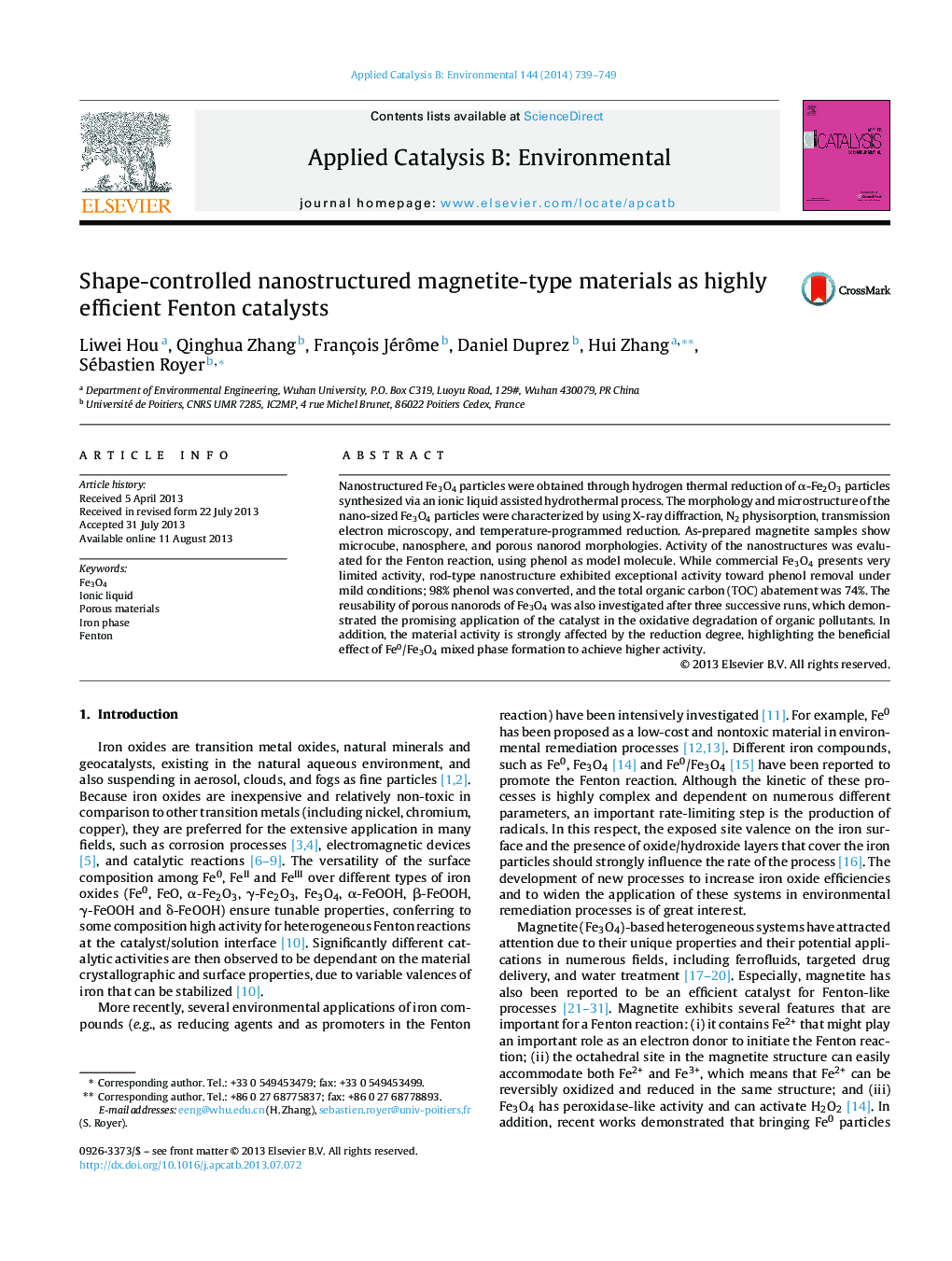| Article ID | Journal | Published Year | Pages | File Type |
|---|---|---|---|---|
| 45413 | Applied Catalysis B: Environmental | 2014 | 11 Pages |
•High surface area hematite phase with defined morphology is reported by using ionic-liquid assisted hydrothermal route.•Shape controlled morphologies of magnetite are obtained by thermal reduction of hematite.•High surface area magnetite phase displays high activity for Fenton reaction.•Beneficial effect of Fe0/Fe3O4 is observed on the phenol oxidation activity.
Nanostructured Fe3O4 particles were obtained through hydrogen thermal reduction of α-Fe2O3 particles synthesized via an ionic liquid assisted hydrothermal process. The morphology and microstructure of the nano-sized Fe3O4 particles were characterized by using X-ray diffraction, N2 physisorption, transmission electron microscopy, and temperature-programmed reduction. As-prepared magnetite samples show microcube, nanosphere, and porous nanorod morphologies. Activity of the nanostructures was evaluated for the Fenton reaction, using phenol as model molecule. While commercial Fe3O4 presents very limited activity, rod-type nanostructure exhibited exceptional activity toward phenol removal under mild conditions; 98% phenol was converted, and the total organic carbon (TOC) abatement was 74%. The reusability of porous nanorods of Fe3O4 was also investigated after three successive runs, which demonstrated the promising application of the catalyst in the oxidative degradation of organic pollutants. In addition, the material activity is strongly affected by the reduction degree, highlighting the beneficial effect of Fe0/Fe3O4 mixed phase formation to achieve higher activity.
Graphical abstractFigure optionsDownload full-size imageDownload as PowerPoint slide
